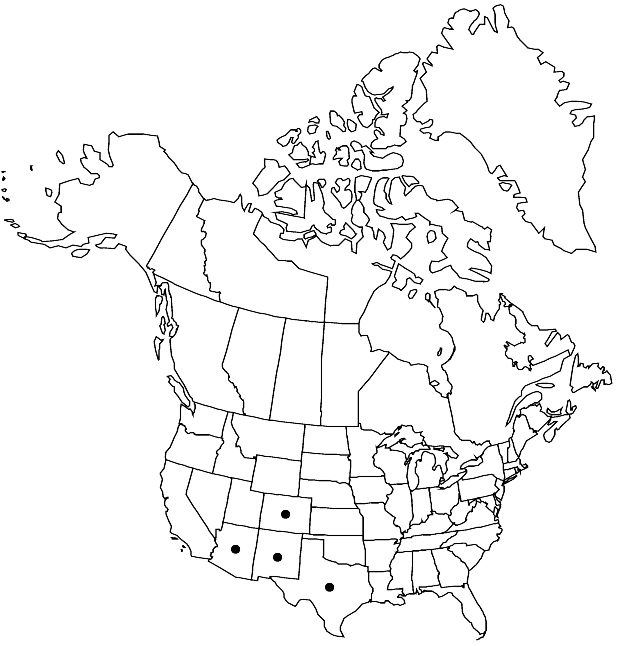Hesperidanthus linearifolius
Bull. Torrey Bot. Club 34: 434. 1907.
Perennials. Stems simple or few from caudex, erect, (often much-branched distally), (2.5–) 3.5–10 (–15) dm. Leaves shortly petiolate; blade usually linear to linear-lanceolate, rarely lanceolate, (2.5–) 3.5–12 (–15) cm × (1–) 2–6 (–10) mm (smaller distally), base cuneate to attenuate (or petiolelike), margins entire or, very rarely, sparsely denticulate, apex acuminate to acute. Racemes several-flowered, (proximalmost flowers sometimes bracteate). Fruiting pedicels divaricate or ascending, straight, (5–) 8–20 (–25) mm. Flowers: sepals purplish, (4–) 4.5–7 × 1–2 mm, (median pair apical cuculla to 0.7 mm); petals purple, (10–) 12–16 (–18) × (2–) 3.5–5.5 mm, claw distinctly differentiated from blade, [5–7 (–9) mm]; filaments 2–4 mm; anthers narrowly oblong to linear, 2–4 mm; gynophore 0.4–1 (–2) mm. Fruits usually straight, rarely curved, terete, (3.5–) 4–9 (–11) cm × 1–1.5 mm; ovules (76–) 80–110 per ovary; style subclavate to cylindrical, 0.5–1.8 (–2.5) mm; stigma conical, 2-lobed (lobes prominent, connivent). Seeds 0.9–1.6 × 0.5–0.9 mm. 2n = 22, 44.
Phenology: Flowering Jul–Nov.
Habitat: Open woods, dry hillsides, oak woodland, mixed conifer forests, arroyos, canyons, rocky ridges, limestone ledges, sandstone crevices, roadsides
Elevation: 700-3100 m
Distribution

Ariz., Colo., N.Mex., Tex., Mexico (Chihuahua), Mexico (Coahuila), Mexico (Durango), Mexico (Nuevo León), Mexico (San Luis Potosí), Mexico (Sonora), Mexico (Zacatecas)
Discussion
Selected References
None.
Lower Taxa
"elongated" is not a number."thick" is not a number."dm" is not declared as a valid unit of measurement for this property."dm" is not declared as a valid unit of measurement for this property.
